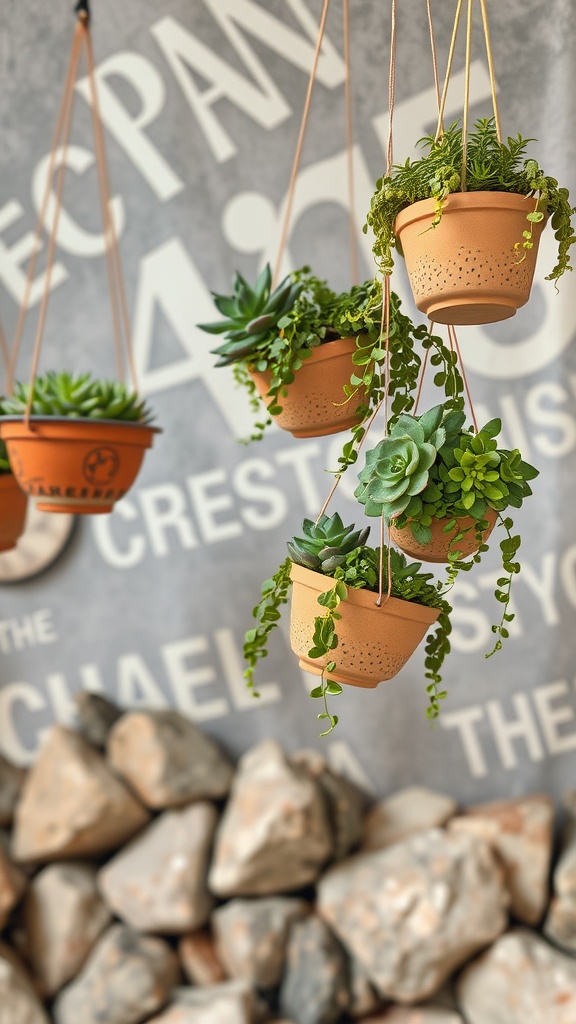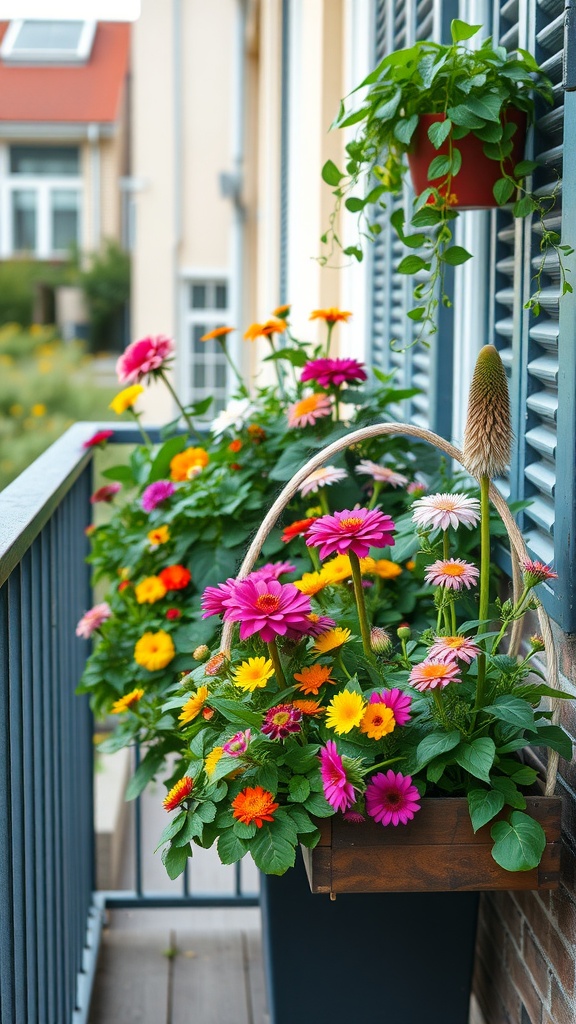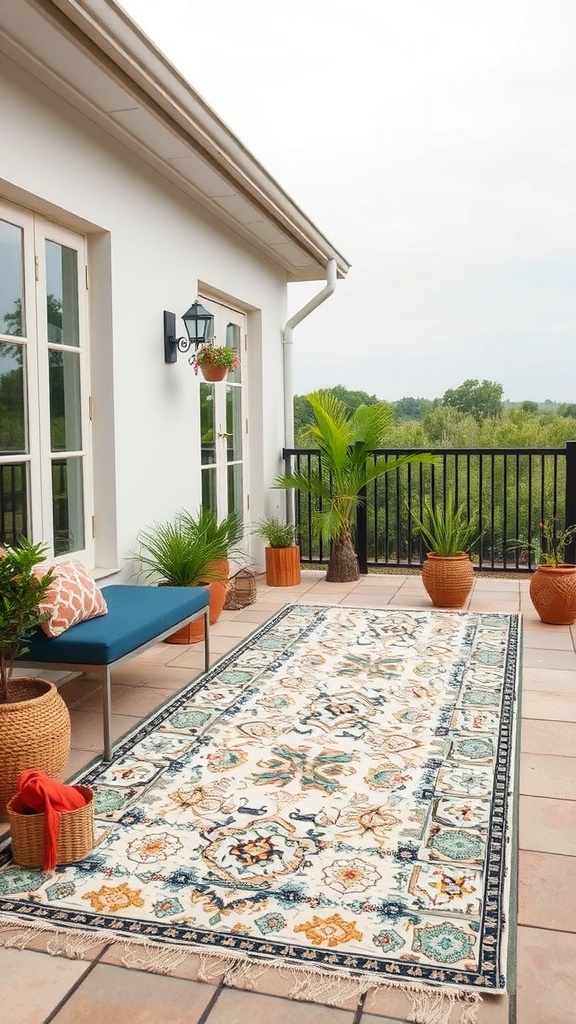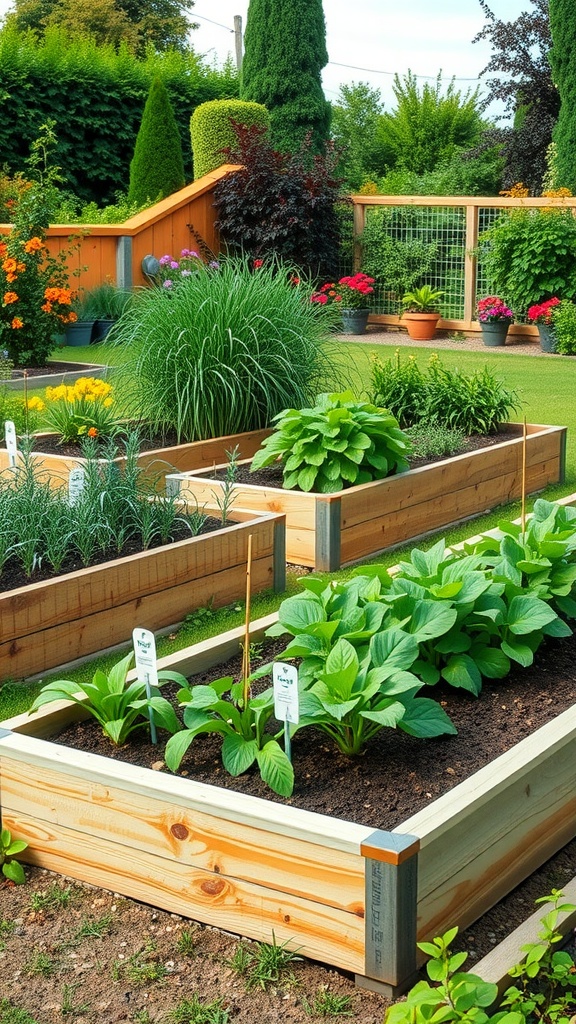Garden edging is an essential element that adds structure, definition, and beauty to your outdoor spaces. Whether you’re looking to create clear boundaries, enhance the aesthetic appeal of your garden, or keep your plants neatly contained, brick garden edging offers timeless elegance and functionality. Here are 19 creative brick garden edging ideas to inspire your next outdoor project.
1. Classic Straight Brick Edging

The most traditional and versatile option for garden edging is a clean, straight brick layout. Using uniform bricks aligned along the edge of your garden beds provides a sharp, defined boundary that works well in any garden style, from modern to rustic. This classic look highlights the shape of your flowerbeds or lawn and prevents soil from spilling over into the grass.
Choose bricks that complement the colors of your landscape and exterior design for a cohesive appearance. For a more sophisticated touch, try using bricks with a slight weathered finish. The straight-line design gives your garden a neat and orderly look while being incredibly low-maintenance. This type of edging works best with plants that are not too sprawling, as it helps to keep them contained within the defined space.
The straight brick line can also serve as a foundation for other creative touches, such as adding decorative pebbles or even placing solar-powered lights along the edge for a subtle nighttime glow.
2. Curved Brick Edging
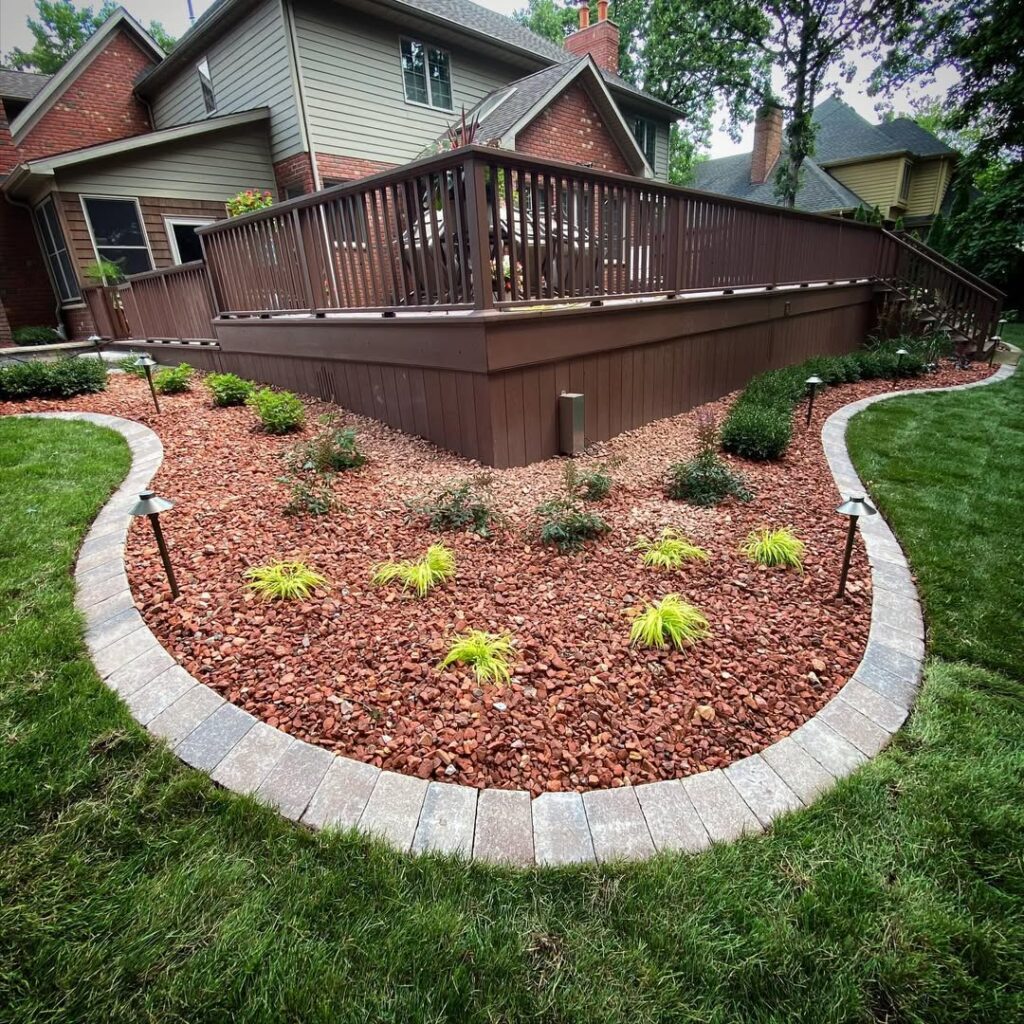
If you prefer a softer look with more flow, curved brick edging can help create a sense of organic movement in your garden. This style works wonderfully for more informal gardens, allowing your edging to follow the natural curves of flowerbeds or lawns. The gentle curves can create a flowing design that mimics nature, contrasting nicely with geometric patterns in your outdoor furniture or patios.
To achieve a perfectly curved shape, consider laying the bricks in a staggered pattern. This adds visual interest while still maintaining a functional boundary. Additionally, curved brick edges are great for gardens with irregular shapes, giving them a more balanced and natural feel. Consider pairing this style with tall plants like grasses or vines that will blend seamlessly into the organic shape.
3. Raised Brick Edging
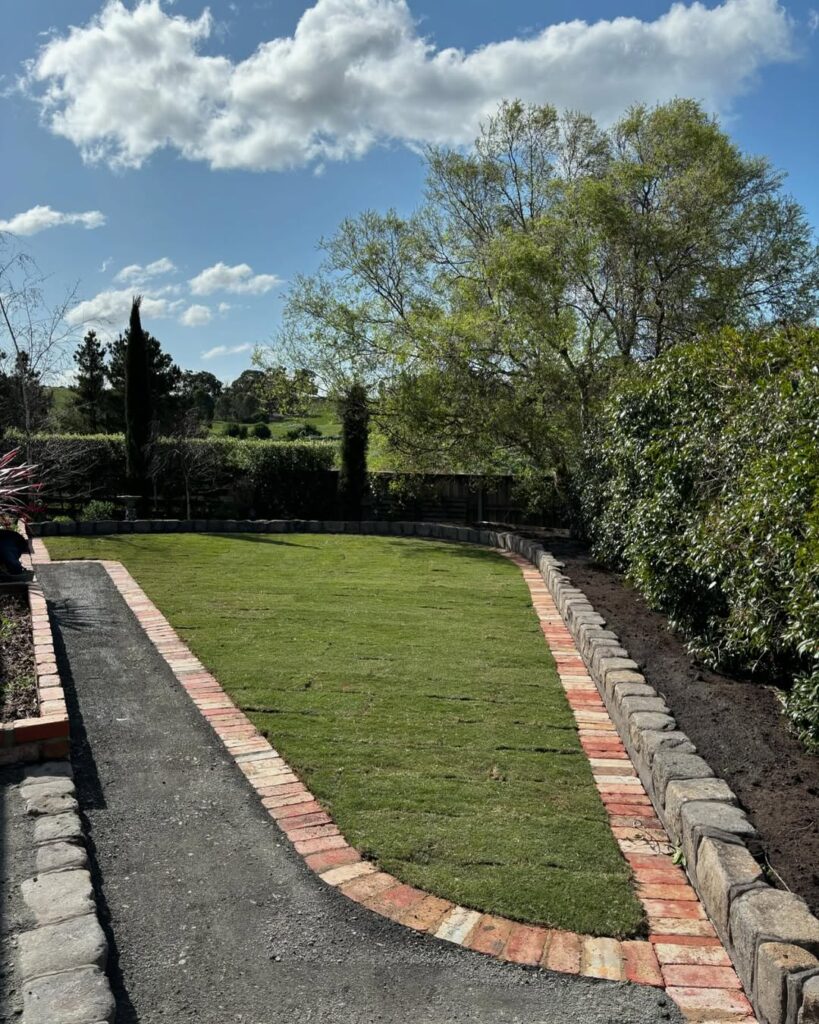
For a more defined garden border that stands out, raised brick edging offers a fantastic solution. By stacking bricks to create a slight elevation, you can establish a distinct separation between garden beds and the surrounding lawn. Raised edging can also help keep mulch, soil, and decorative elements within your garden’s perimeter, which is especially helpful for controlling erosion.
You can opt for a uniform stack of bricks for a minimalist approach or create a more intricate design by alternating brick sizes and orientations. Raised brick edges provide the opportunity to plant low-growing flowers or herbs right along the top, making it a versatile choice for a variety of plantings. This style adds dimension to your garden and gives the illusion of a deeper, more expansive space.
4. Brick and Gravel Combination

For a rustic yet contemporary look, consider combining bricks with gravel as your garden edging material. This style offers the best of both worlds: the solidity of bricks for clear definition and the natural texture of gravel for an earthy aesthetic. It works exceptionally well in gardens that feature Mediterranean or cottage-style landscapes, where informal and natural elements shine.
The bricks can act as the primary border, while the gravel fills in the area inside the bricks, offering a contrast in texture. This design is not only visually appealing but also functional. The gravel allows for efficient drainage while providing a stable foundation for the bricks. To maintain this design, you’ll need to periodically replenish the gravel, but overall, it’s a relatively easy-to-care-for option.
5. Basketweave Brick Edging
Source
If you’re looking for something more intricate, the basketweave brick pattern is a perfect choice. This design weaves the bricks in an interlocking fashion that creates a visually interesting, textured edge. It’s ideal for gardens that want to showcase a more traditional or vintage feel, making it a popular choice for cottage gardens or Victorian-style homes.
The basketweave pattern is particularly striking when viewed up close, as the texture of the bricks gives depth and detail. While it may take more time to install than a simple straight line or curve, the result is a unique, durable edge that serves as a focal point in your landscape. To complement the design, consider planting flowers with rich colors like roses or daisies along the border to enhance the visual interest.
6. Angled Brick Edging
Source
For an edgy, modern take on brick garden edging, angled bricks are a great option. By positioning the bricks at a 45-degree angle, you can create a bold, angular edge that contrasts beautifully with the softer lines of plants. This style is particularly well-suited for contemporary gardens where sharp, geometric lines dominate the design.
Angled brick edges help create clean, crisp lines that prevent grass from creeping into garden beds, offering a practical solution for neatness. This type of edging is ideal for gardens with minimalist or modern themes, especially if paired with sleek outdoor furniture or sharp landscaping features like metal sculptures.
7. Stacked Brick Pillars
Source
If you’re looking to add a bit of height and structure to your garden, consider incorporating stacked brick pillars as part of your edging. This design is great for adding a sense of grandeur to your space, especially in larger gardens or areas that feature tall plants like shrubs or small trees.
Stacked brick pillars create a strong visual impact, providing a more architectural element to your outdoor design. You can alternate the stacking of bricks with different colors or textures to create a dynamic effect. These pillars can also serve as a great backdrop for climbing vines or flowers, allowing you to add even more layers of beauty to your garden’s layout.
8. Zigzag Brick Edging
Source
For a playful yet orderly look, zigzag brick edging is a fun way to add personality to your garden. This pattern works particularly well in smaller spaces, as it can create the illusion of a more expansive garden by drawing the eye along the diagonal lines. The zigzag effect introduces movement into the garden, making it feel lively and dynamic.
This design can be created by simply laying bricks at alternating angles, creating the zigzag effect as you move along the edge. For added flair, consider using a variety of colored bricks, which can further highlight the zigzag pattern and add depth to your garden’s visual appeal. Pair this with vibrant flowers or shrubs to enhance the playful nature of the design.
9. Brick Garden Edging with Turf
Source
For a clean, low-maintenance garden edge, combine brick with turf for a crisp, green appearance. By lining the bricks along your garden border and filling in the space with well-maintained turf or grass, you create an edge that blends seamlessly into the lawn while still defining garden spaces. This design is particularly effective for homeowners who prefer natural, green elements in their outdoor spaces.
The turf provides a soft contrast to the sturdy, durable brick, while the bricks keep the turf from spreading into the flowerbed. This option works best for more contemporary or modern outdoor spaces where the emphasis is on clean lines and minimalism.
10. Semi-Circular Brick Edging
Source
For a unique, elegant look, semi-circular brick edging adds a soft, curving element to your garden. This design works beautifully when creating circular or semi-circular garden beds, giving them a distinct, defined border. Semi-circular edges also allow plants to spill over the edges, which is ideal for gardens with flowers that bloom and grow outward, creating a more fluid and natural look.
This style is also perfect for creating focal points in your garden, such as around a central feature like a fountain or a small tree. The gentle curvature of the semi-circle adds visual interest without being too rigid, making it a great choice for informal or romantic gardens.
11. Vertical Brick Edging
Source
For a bold and modern statement, vertical brick edging can be a fantastic way to elevate your garden’s overall design. By stacking bricks upright, you create a visually striking effect that contrasts with the horizontal lines typically seen in traditional garden edging. This style is especially effective in contemporary gardens or those that feature geometric landscaping.
Vertical brick edging can be used as a focal point or a subtle border, depending on how many bricks are stacked. The height of the bricks can be adjusted to suit your design—shorter stacks can add texture, while taller stacks create more dramatic borders. You can experiment with different types of bricks or finishes for added visual interest, such as rough-hewn or smooth bricks. Additionally, vertical bricks work well when paired with low-growing ground cover or vibrant flowers, as they allow the plants to cascade over the edge for a beautiful layering effect.
12. Brick Edging with Stone Inlays
Source
Combine the elegance of brick with the rugged beauty of stone by incorporating stone inlays into your brick edging. This creative design adds texture, depth, and color contrast to your garden borders. You can alternate between bricks and stones, creating a mosaic-like effect that gives your garden a natural, earthy feel.
The stone inlays can be placed in a random pattern or organized into a more structured layout, depending on the overall aesthetic of your garden. This edging style works especially well in gardens with a more rustic or cottage-inspired theme, where earthy tones and natural materials are prevalent. The combination of bricks and stones also allows for better drainage and can help prevent erosion in areas with heavy rainfall.
13. Brick Edging with Cement Grouting
Source
For a sleek, contemporary look, cement grouting between bricks adds a clean, finished appearance to your garden edges. By applying cement in between your bricks, you create a solid, unified border that looks more polished and intentional. This edging style is particularly effective when you’re aiming for a modern or minimalist aesthetic, where sharp lines and consistency are key.
Cement grouting not only enhances the design but also provides extra stability to the bricks, making it an excellent choice for high-traffic garden areas or regions with significant weather conditions. You can choose light or dark grout depending on the desired contrast with your bricks. To enhance the style, pair it with geometric plants or architectural features that emphasize clean lines and modern design.
14. Brick Edging with Wood Accents
Source
For a fusion of materials, consider combining brick edging with wooden accents for a warm, earthy vibe. The combination of sturdy bricks and natural wood creates an inviting, rustic look that suits a variety of garden themes, from country to contemporary. You can use wood to create horizontal borders that sit on top of the bricks or as a backdrop to the edging.
This style works beautifully in gardens where you want to add a natural, organic touch while maintaining structure. Whether you opt for reclaimed wood for an eco-friendly look or sleek, modern timber for a more refined finish, the pairing of wood and brick adds both texture and contrast to your landscape. Planting climbing vines or low-maintenance shrubs along the edge can further complement this combination and enhance its natural appeal.
15. DIY Brick Garden Path Edging
Source
If you have a garden path that needs definition, using bricks as edging is an excellent choice. Bricks placed along the sides of a garden walkway provide a stable, clean border that keeps the path neat and defined. Whether you opt for a straight, curved, or zigzag design, the bricks create a structured outline for the path, helping to guide visitors through your garden while preventing grass and plants from encroaching.
To make the path feel more cohesive, consider matching the bricks with the material of your garden patio or nearby structures. A DIY approach allows you to personalize the design and control the width of the border, making it as subtle or as prominent as you prefer. You can also mix in other elements, like gravel or pebbles, to add texture and prevent weeds from growing through the cracks.
16. Recycled Brick Edging
Source
If you’re looking for an eco-friendly option, recycled bricks can add both sustainability and charm to your garden edging. Using bricks that have been repurposed from old buildings, sidewalks, or other structures gives your garden a unique, weathered look that can add character and history to your outdoor space.
Recycled bricks often come in various colors, sizes, and textures, allowing you to create a one-of-a-kind design. This edging style is perfect for cottage gardens, rustic landscapes, or areas where you want to add a vintage or reclaimed feel. While recycled bricks may require a little more effort to clean and prepare, the result is an eco-conscious design that looks distinctive and full of charm.
17. Stepping Stone Brick Edging
Source
For an adventurous and functional design, consider incorporating stepping stones into your brick edging. This design combines both decorative and practical elements, offering a pathway to navigate through your garden while also serving as an attractive border. Stepping stones can be set in a grid-like pattern or arranged sporadically within the brick edging to create a natural flow.
This style is perfect for larger gardens or those with winding pathways, as it adds texture and dimension while offering easy access to different sections of the garden. The combination of bricks and stepping stones creates a harmonious blend of structure and flexibility. It’s also a great option if you enjoy walking through your garden regularly and need a safe, stable path that’s both functional and aesthetically pleasing.
18. Brick Edging with Decorative Mosaic Designs
Source
For a truly unique and artistic garden edging, consider incorporating decorative mosaic designs into your brick border. Whether it’s a subtle pattern or a vibrant burst of color, mosaic designs can transform a simple brick edge into an eye-catching work of art. This style is particularly effective in gardens with a whimsical or eclectic vibe, where creative expression is encouraged.
You can create the mosaic using different colored bricks, tiles, or even glass pieces, depending on the theme and color scheme of your garden. The result is a dynamic and custom garden edge that reflects your personality and design preferences. Mosaics can also serve as a focal point in your garden, attracting attention while adding a layer of artistic detail.
19. Brick Edging with Gravel Trenches
Source
For a distinctive and modern twist on traditional brick edging, try using gravel trenches in combination with your bricks. This design features a trench filled with decorative gravel placed between rows of bricks, creating a visually appealing and functional boundary. The gravel helps with drainage and prevents weed growth, while the bricks maintain the structure and definition of the edge.
This edging style works particularly well in contemporary or minimalist gardens, where the simplicity of the design allows the focus to remain on the plants and outdoor elements. You can experiment with different types of gravel—light, dark, smooth, or jagged—depending on the desired texture and color contrast with your bricks.
Conclusion
Source
Brick garden edging offers a timeless, durable, and versatile solution to enhance the look and structure of any outdoor space. Whether you’re aiming for a modern, rustic, or whimsical garden design, there’s a brick edging style to suit every aesthetic. From traditional straight lines to more intricate patterns like basketweave and mosaics, brick edging helps define your garden while adding both beauty and function.
By thoughtfully choosing the right brick edging style for your garden, you can elevate your outdoor living experience and create a space that’s both visually appealing and easy to maintain. The ideas shared in this list will inspire you to design a garden that reflects your personality and complements your home’s overall style. Whether you opt for a subtle border or a bold statement, brick garden edging is a fantastic way to create lasting beauty in your outdoor spaces.
